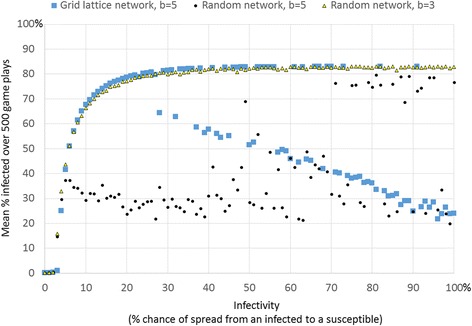Fig. 5.

There is a bimodal level of average infection in the grid network when benefit is above the threshold allowing protection to survive. For each level of infectivity, this plot shows one simulation run (whereas Fig. 4 averaged results over 10 simulation runs), which makes the bimodal average infected evident when b = 5 in the grid network. The plots also show average proportion infected by infectivity for other network types. In a grid lattice network, when infectivity is 29 % or higher, health protection was increasingly likely, and thus infection was increasingly lower. There are two distinct average levels of infection, one for which protection survives, and another for which protection dies out early. In a random network, rapid spread of disease early in simulation runs triggers protection which in turn lowers infection
